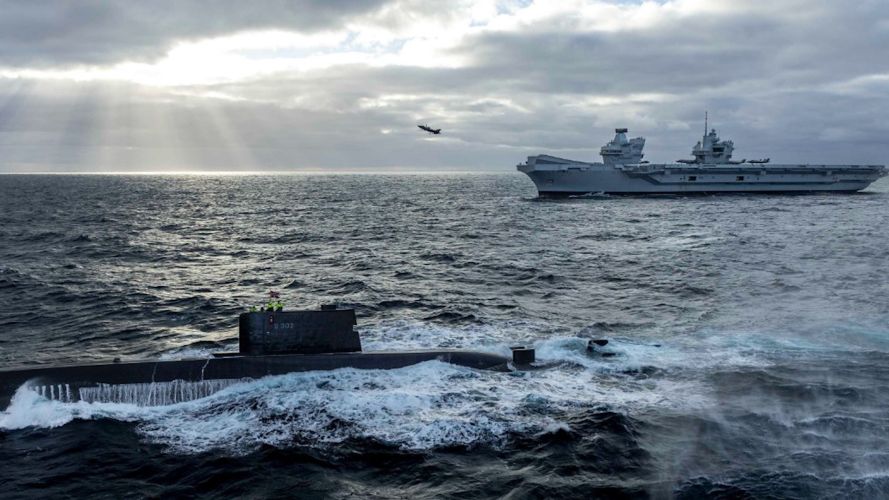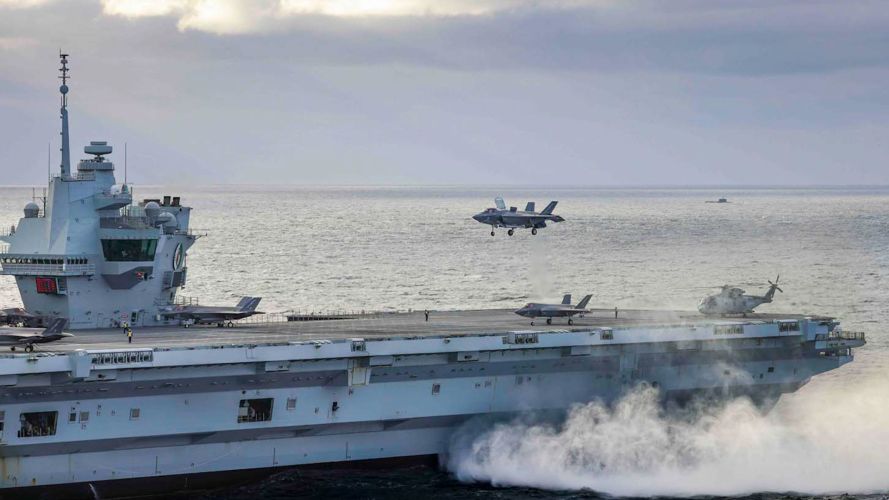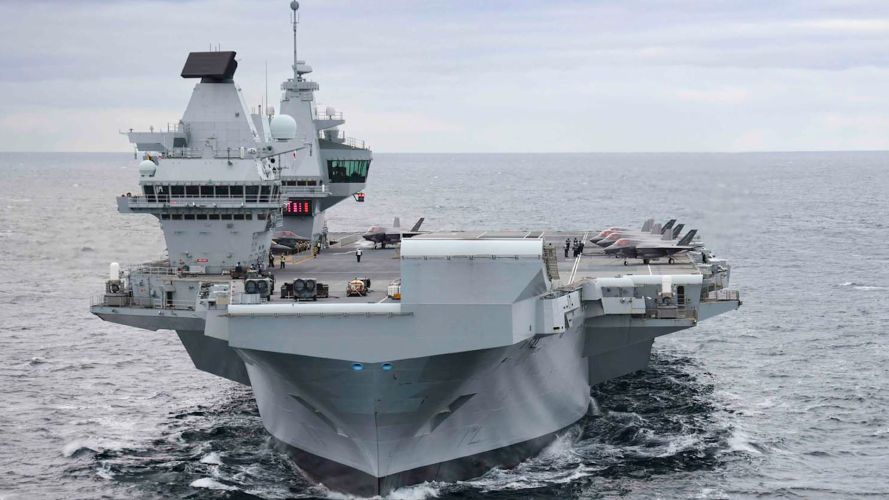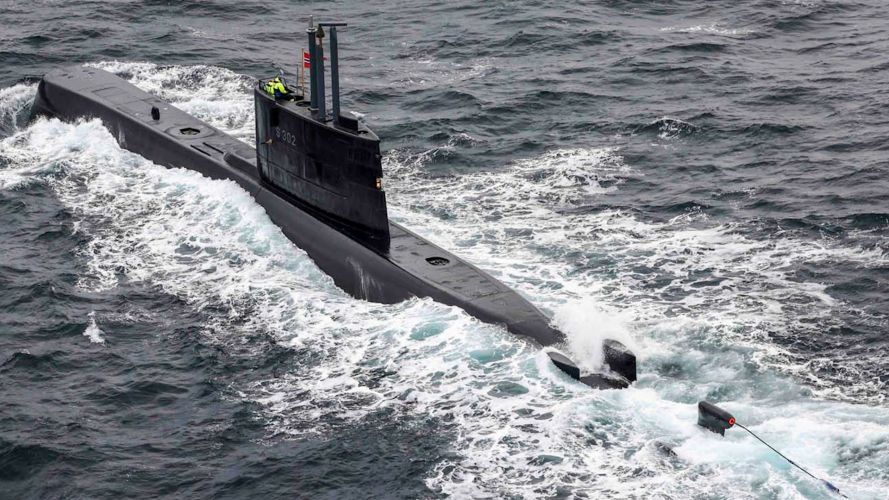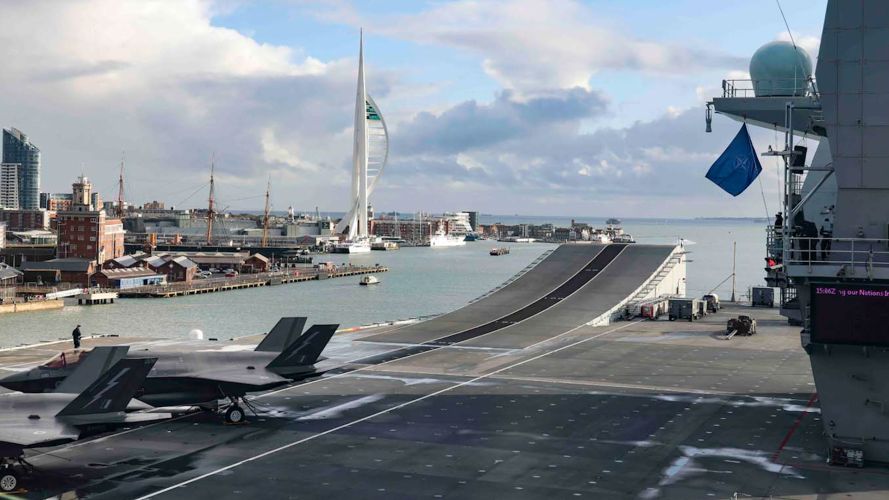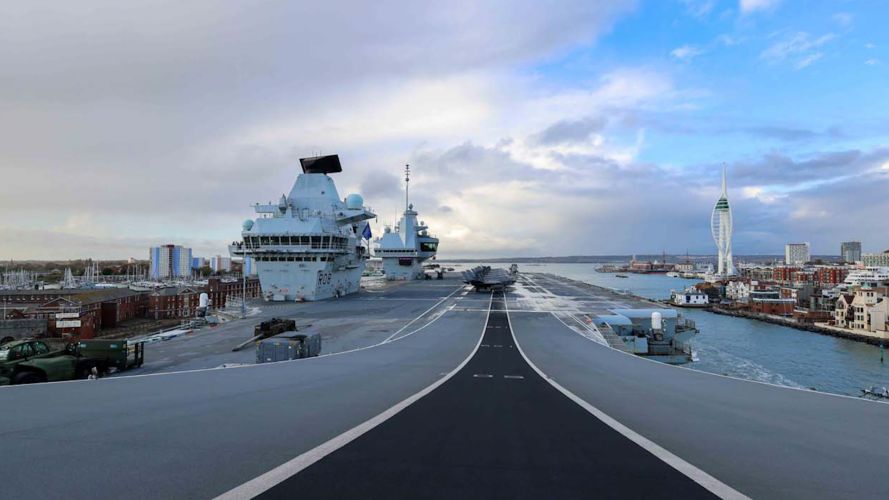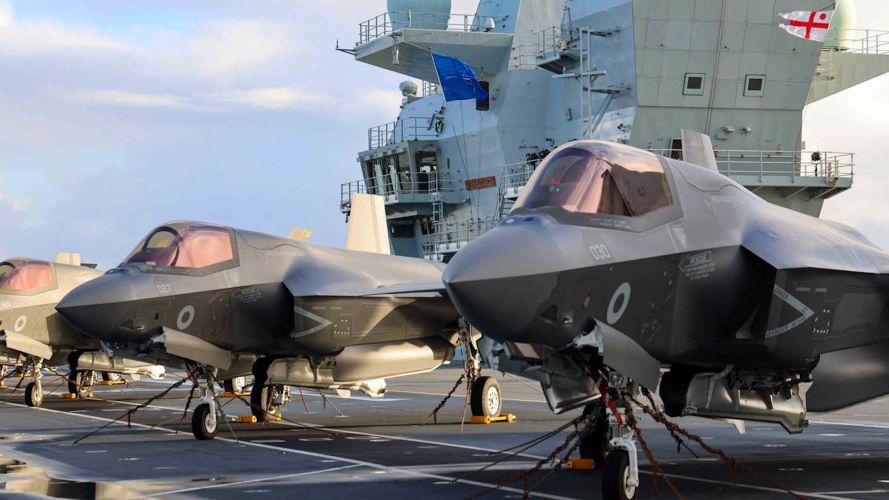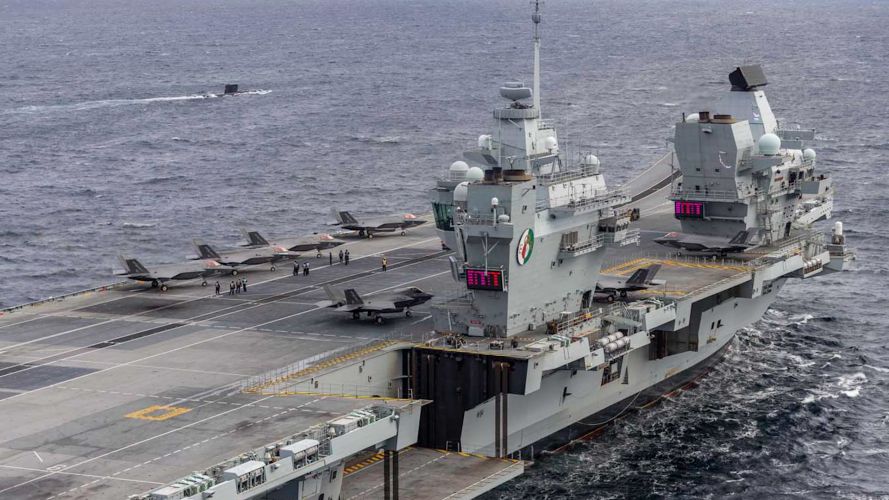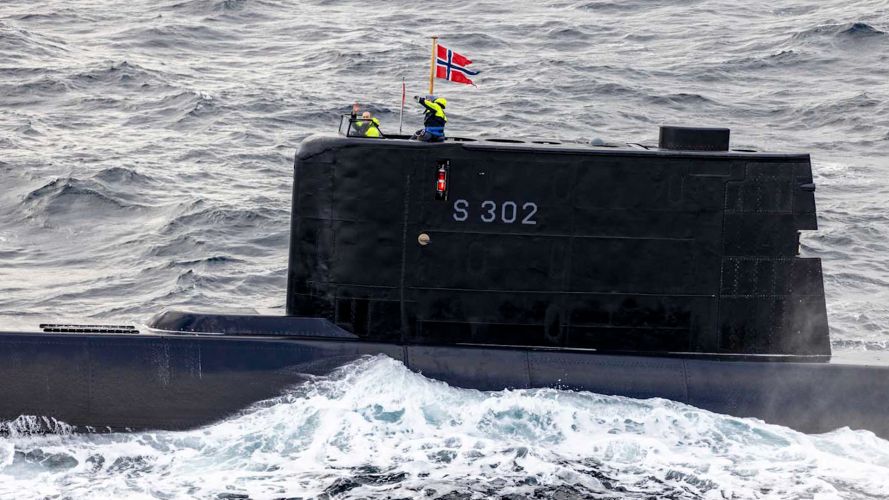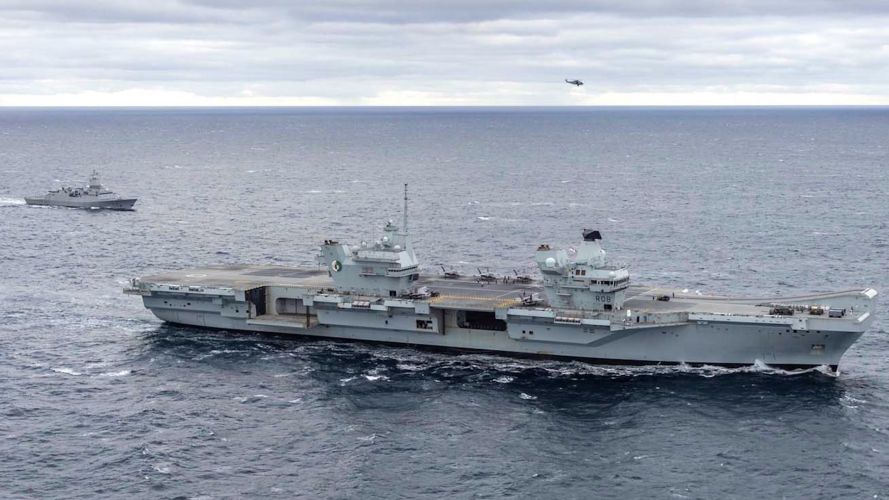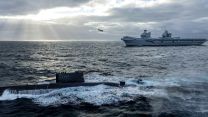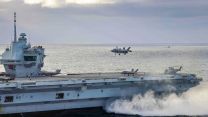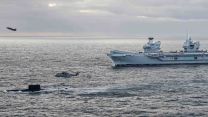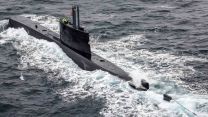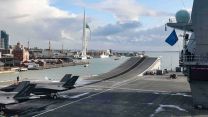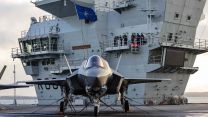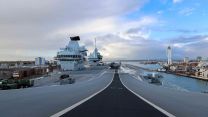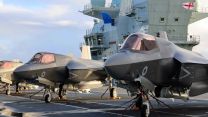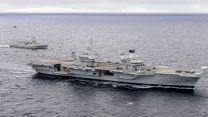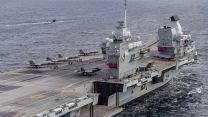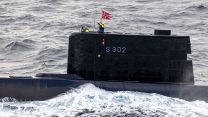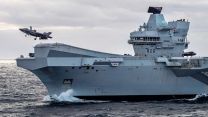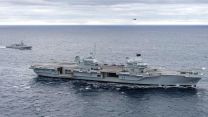HMS Queen Elizabeth brought under Nato command for first time
HMS Queen Elizabeth, one of the largest and most powerful ships ever built for the Royal Navy, is on exercise operating under Nato command for the very first time.
The Royal Navy's flagship left Portsmouth naval base last week to take part in Exercise Neptune Strike, which involved a mock game of cat-and-mouse with a Norwegian submarine playing the aggressor in the North Sea.
Under the command and control of Nato's Naval and Striking Support Forces, warships from 21 nations are deployed on Neptune Strike, which the alliance described as being an "enhanced vigilance activity".
- HMS Queen Elizabeth leaves Portsmouth with F-35s on flight deck after short stop
- Watch: Rare sight of F-35s on HMS Queen Elizabeth's flight deck in Portsmouth
- Royal Navy flagship HMS Queen Elizabeth sets sail from Portsmouth
Putting the UK contingent under Nato control creates a potent task group that is able to operate across a vast area from the length and breadth of the Mediterranean and north to the Baltic Sea.
Three aircraft carriers are now under Nato's command, with HMS Queen Elizabeth deployed to the North Sea, and the Italian navy's Cavour and the Spanish navy's Juan Carlos in the Mediterranean.
According to the Royal Navy, this knitting together of cutting-edge forces means they are ready to shield every inch of the alliance’s airspace, waterways and territory.
Exercise Neptune Strike
The exercise intends to demonstrate that the warships remain as strong and relevant as ever, and are capable of meeting the defensive commitments of the alliance.
Norwegian submarine HNoMS Utstein was tasked with trying to "sink" HMS Queen Elizabeth, while the job of a sub-hunting Merlin helicopter from 820 Naval Air Squadron was to prevent the simulated attack.
Neptune Strike also tested other aircrews' skills and tactical decision-making, which saw Royal Air Force P8 Poseidon maritime patrol aircraft join the hunt for the Norwegian Ula-class boat.
Later in the training, the Merlin carried out a rare "fin transfer" - skilfully hovering over the Utstein while she was on the surface and moving supplies and personnel to and from the aircraft and boat.
The training helped refresh the Merlin's crew in the art of evacuating casualties from a submarine on patrol.
Neptune Strike continues until Friday 10 November.
HMS Queen Elizabeth briefly returned to her home port last week, having spent time deployed in northern European waters with her Nato and Joint Expeditionary Force allies.
Unusually, the £3bn vessel returned with her embarked F-35Bs on her flight deck - and the state-of-the-art jets remained there as she set sail from Portsmouth following her logistics stop and short period of maintenance.
The carrier and her aircraft have been taking part in a range of exercises and training off the Norwegian coast since September.
HMS Queen Elizabeth sailed in Norway's fjords and also visited the Swedish city of Gothenburg where events were hosted on board to forge deeper bonds between the two nations' armed forces.
